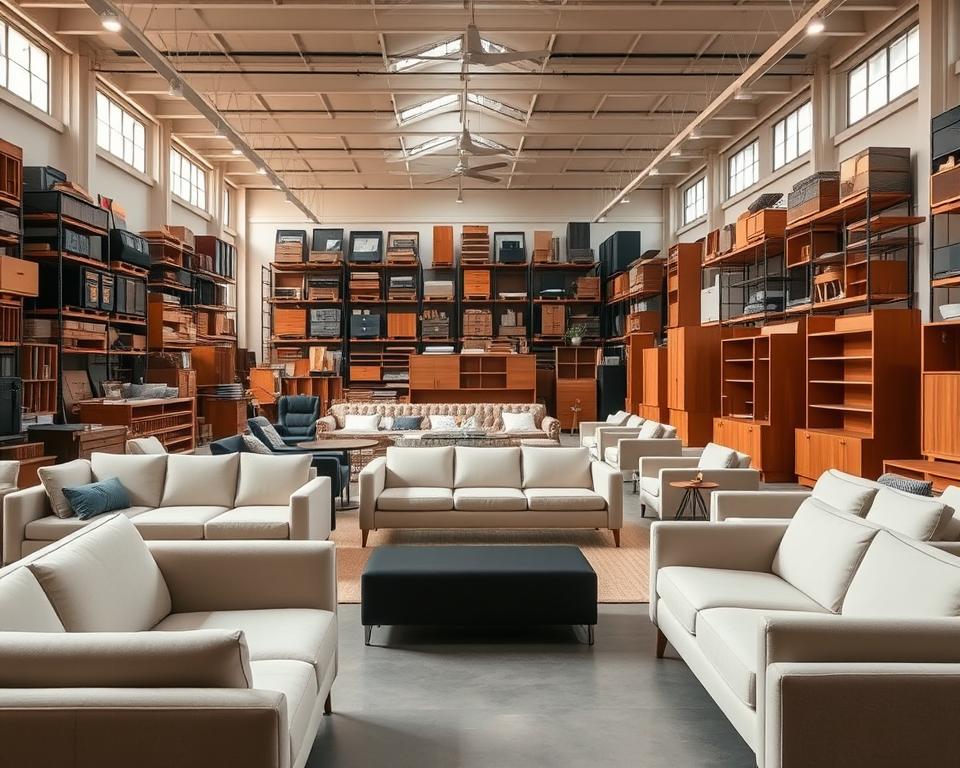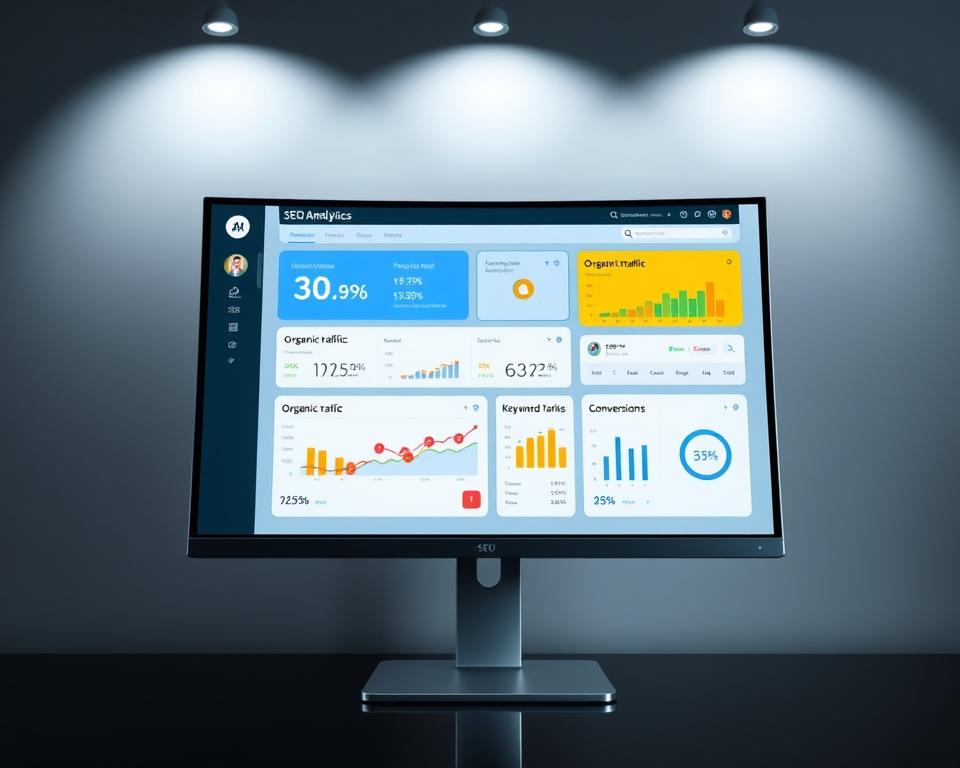The Best Furniture Store in Hong Kong: Your Source for Quality Pieces
As Charles Eames famously stated, “The details are not the details. They make the design.” This holds true in Hong Kong, where efficient use of space is essential. An apartment can be entirely transformed by selecting the appropriate furniture. Among the leading furniture stores, Stockroom Furniture shines brightly. The store clearly prioritizes superior quality and pays close attention to detail. The store offers an array of exquisite furniture that can uplift any home’s ambiance. Let’s dive into the exceptional selections available in best furniture shop in Hong Kong, highlighting the city’s dynamic furniture landscape.
Main Takeaways
- Find out how important quality furniture is for home design.
- Explore why Stockroom Furniture is a front-runner in the industry.
- Learn how the right furniture can elevate your living space.
- Understand the importance of premium home furnishings in small apartments.
- Get insights into the furniture scene in Hong Kong.
The Furniture Scene in Hong Kong: An Overview
The furniture landscape in Hong Kong is lively, mixing old and new styles seamlessly. Both local talents and global names drive this vibrant scene. Their collaboration results in a unique market for furniture. This market appeals to those who appreciate contemporary designs with a cultural twist.
Hong Kong’s limited living spaces have led to the creation of innovative furniture designs. Designers focus on crafting pieces that are both stylish and practical. These innovations offer multifunctional furniture, perfect for compact city living.
A blend of Eastern and Western styles significantly influences the furniture scene in Hong Kong. Shoppers prioritize both design and quality, alongside a respect for traditional craftsmanship. This preference steers the market, pushing designers towards novel materials and methods. The result is a continually refreshing furniture scene in Hong Kong.

Why Quality Furniture Should Be Your Priority
Creating a home atmosphere that is welcoming requires choosing quality furniture. It serves many roles, improving both comfort and the beauty of your space. It’s an essential investment, remaining appealing and robust despite regular use.
High-quality furniture uses top materials and expert construction. Its durability leads to longevity, allowing you to enjoy your furniture for years. By investing in quality pieces, you’re choosing wisely. These items maintain their worth, sometimes increasing in value.
Make sure to examine the wood, fabric, and construction when you’re in the market for quality furniture. Well-crafted furniture not only enhances a space but also offers lasting stability. For those aiming to upgrade their home, recognizing these elements is key to smart purchases.
Looking for the Best Furniture Shop in HK? Try Stockroom Furniture
When you’re on the hunt for outstanding furniture, Stockroom Furniture in Hong Kong is your best bet. Known for its vast array of sophisticated and modern offerings, this furniture outlet in Hong Kong caters to diverse aesthetics. Everyone can find something to their liking here.
Stockroom provides a comprehensive selection of high-quality furniture options. It has everything from fashionable sofas and elegant dining sets to practical storage options. Whether you favor minimalism’s clean lines or prefer bolder statements, you’re covered. There’s a match for every taste.
Here are some tips to make the most of your visit to Stockroom hk:
- To find unique styles, make sure to explore all the different sections.
- Take advantage of in-store consultations for personalized advice.
- Take note of the store’s layout and picture how the pieces would fit into your living space.
With Stockroom Furniture’s careful selection, you can be confident that every piece reflects the latest trends and quality. It stands as the prime choice for up-to-date home furnishings – Loft furniture Hong Kong.
Looking for Stylish Furniture? Consider Indigo Living.
When it comes to elegant furnishings, Indigo Living is a well-known and respected name in the furniture industry. With over four decades of insight, the brand showcases an extensive lineup, not limited to furniture but extending to lighting, home decor, and bedding as well. This wide array accommodates various preferences, making it a perfect match for any dwelling.
You’ll often hear customers praising the elegant designs and excellent craftsmanship of Indigo Living. The meticulous details in each piece underscore a dedication to improving home aesthetics. Reviews highlight the opulent shopping journey at Indigo Living, where ensuring customer satisfaction is paramount. Shoppers benefit from a staff that’s informed and eager to help, making for a smooth experience.
| Characteristic |
Description |
| Experience |
Over 40 years in the furniture industry |
| Product Range |
Stylish furniture, lighting, home decor, bedding |
| Quality |
High craftsmanship and attention to detail |
| Customer Service |
Highly regarded for its excellent service and support |
With its combination of innovation and a strong commitment to stylish, practical furniture, Indigo Living continues to be a leading name. It remains a premier choice for those aiming to improve their living areas with refined decor that reflects their taste. This fusion of quality, design, and customer focus cements Indigo Living’s place in the elite furniture market.
Manks Limited: Your Destination for Scandinavian Furniture
For fans of Scandinavian furniture, Manks Limited has been a prominent spot since 1996. Found in Wong Chuk Hang, this premier furniture store boasts a spacious showroom that brilliantly reflects Nordic design philosophies. It presents a carefully arranged layout, displaying pieces that highlight simplicity and functionality.
People who visit Manks often comment on the careful craftsmanship and how long their furniture lasts. These furniture items showcase a contemporary look while guaranteeing long-lasting use. Ideal for home and office settings, they are celebrated for their streamlined designs and minimalistic qualities. This resonates well with today’s design preferences.
Manks Limited is praised by clients for providing a seamless shopping experience. Here, design aficionados easily see how these unique items can improve their spaces. Dedicated to excellence, Manks Limited stands out in the Scandinavian furniture industry.
TREE: Eco-Friendly Furniture Choices
Eco-friendly furniture is a crucial consideration, and TREE is a leading company in this area. They excel in making beautiful, sustainable home decor. Their creations don’t just boost aesthetics; they also minimize environmental damage. TREE uses reclaimed materials to craft items that are both striking and eco-conscious.
A deep commitment to environmental sustainability is at the heart of TREE’s operations. They ensure every piece they design meets high-quality standards and furthers eco-friendliness. Their devotion is clear in their wide range of furniture. This makes living eco-consciously more achievable for everyone.
In addition to their furniture, TREE provides services for custom design and refurbishing. These offerings align with their goal to foster uniqueness and sustainability in home decor. With TREE, customers get eco-friendly options that fulfill their design needs and encourage a greener lifestyle.
Japanese-Inspired Furniture Collections at Francfranc
You’ll find that Francfranc is a leader in the market with its Japanese-inspired furniture that attracts a contemporary audience. Its collection boasts vibrant colors and bold patterns. These features make it ideal for contemporary homes seeking a lively aesthetic.
Francfranc’s numerous stores throughout Hong Kong have made it appealing to a wider range of customers. Shoppers are attracted by both the aesthetic value and the high-quality materials used. Customer reviews often express satisfaction, noting the perfect blend of style and function.
People who shop at Francfranc often mention how welcoming the stores feel. The clever display of pieces in realistic settings highlights the collection’s distinctive style. This strategy helps shoppers imagine how the furniture might look in their own spaces, enhancing its appeal.
In summary, Francfranc stands out in the retail sector with its Japanese-inspired furniture options. Positive feedback from customers on both design and quality reinforces its standing. The company’s focus on delightful and innovative collections secures its position in the furniture market in Hong Kong.
Looking for Quality Furniture Online? Try DSL Furniture
When it comes to high-quality contemporary furniture online, DSL Furniture is a leading store. With a wide selection available, customers can discover perfect living room sets or office furnishings. This variety lets buyers find items that blend both aesthetics and functionality.
The convenience of shopping online with DSL Furniture is truly unmatched. Customers can easily navigate the site, exploring detailed descriptions and images. This simplifies the decision-making process, enabling quick and informed choices about furniture that suits any space.
DSL Furniture places the highest priority on quality. Every item is rigorously checked to meet strict standards, ensuring customer satisfaction. Additionally, their dedicated customer service team aids shoppers from the moment of selection to the delivery of their purchases.
The Best Luxury Furniture Showrooms Hong Kong Has to Offer
Hong Kong’s core area boasts an array of luxury furniture showrooms, each presenting a unique combination of creative design and skilled artistry. These high-end furniture showrooms showcase an impressive selection of pieces that cater to discerning tastes. Shoppers often find themselves captivated by the artisanal quality and innovative designs these spaces embody.
You’ll find that a renowned designer furniture outlet featuring iconic brands is one of the most popular places to go. Customers can explore exclusive collections that range from contemporary to classic styles, ensuring that there is something for everyone. The emphasis on high-end materials and exquisite detailing sets these showrooms apart in the competitive furniture market.
Because more people are living in modern ways, luxury furniture has become a sign of status and good taste. The showrooms not only highlight exceptional products but also offer tailored design consultations, allowing customers to create spaces reflective of their personal style. The commitment to excellence across these showrooms enhances Hong Kong’s reputation as a global leader in design.
Exploring the luxurious furniture options will reveal that each showroom has its own unique narrative expressed through the pieces they showcase. This approach fosters a deeper connection between the customer and the products, making each purchase more than just a transaction; it becomes an investment in elegance and sophistication.
Looking for Modern Furniture? Explore Contemporary Shops in HK
Hong Kong’s contemporary furniture shops are all about modern design, featuring clean lines, organic materials, and a minimalist style. These venues mirror the latest in furniture trends while providing pieces that are both useful and artistically significant.
As modern design emphasizes sustainability and flexibility, furniture sellers have begun to use more eco-friendly materials. Additionally, they offer versatile pieces fitting for a variety of lifestyles. Customers can find items that effortlessly integrate into their living spaces, maintaining a balance between style and utility.
The top contemporary furniture stores provide a broad range of choices to suit all preferences. Attuned to the latest trends, these retailers assemble collections that cater to the modern shopper’s requirements. They augment the beauty of interior environments. Here, one will discover an extensive range from eye-catching sofas to innovative storage options, all emphasizing design and practicality.
Looking for Loft or Industrial Furniture in HK? Here’s What to Know
When it comes to furniture in Hong Kong, loft and industrial styles are a standout choice for homes and workplaces alike. These designs are known for their unique charm. They often feature a mixture of reclaimed wood and metal, portraying an urban edge. This blend achieves both comfort and a tough, creative look.
Drawing inspiration from the unpolished appearance of warehouses, industrial furniture in Hong Kong emphasizes both functionality and simplicity. You’ll find pieces like metal shelves, distressed wood tables, and vintage lights. These elements have a timeless quality, perfect for adding a trendy touch to any space.
Many stores now highlight these sought-after styles, offering a variety of choices for different budgets and tastes. Whether you prefer handcrafted pieces or those that are mass-produced, there’s something available for every preference. This ensures that each individual can express their personal style.
Looking for Interior Design Services? Check Out These Furniture Stores in HK
Furniture stores in Hong Kong often provide interior design services to make your shopping experience even better. These Stockroom are designed to meet individual style and functionality needs. Customers get to work alongside experts, ensuring their spaces are both personalized and practical. The results reflect professional guidance and innovative solutions, making home transformation simpler.
You’ll find that these stores specialize in providing home solutions that are tailored to your needs. It starts with a detailed consultation to review the space and discuss preferences. The focus is on creating designs that align with the homeowner’s vision and lifestyle.
You can find many examples of how these services have helped people create amazing spaces. Projects demonstrate how thoughtful design can maximize space and beauty. Also, it shows how to integrate unique furniture into décor. Clients are often thrilled with the outcome and the process of realizing their dream space.
How to Find Affordable Quality Furniture by Comparing Prices
If you’re in the market for furniture, comparing prices is essential. In Hong Kong’s diverse market, finding affordable options without compromising quality is key. Shoppers often struggle with the quality versus price dilemma. This is due to the numerous stores offering a wide array of products.
A comparison chart can be a helpful tool for this. This chart should detail the price ranges and quality of various furniture stores. By organizing such information, buyers can identify where the best deals are. They seek not to sacrifice style or durability.
| Furniture Store |
Price Range (USD) |
Quality |
| Stockroom |
$200 – $2000 |
High |
| Indigo Living |
$150 – $1500 |
Medium to High |
| Manks Limited |
$100 – $1200 |
Medium |
| Francfranc |
$100 – $1000 |
Medium to High |
This way, you can easily compare prices and find furniture that’s both affordable and matches your style. Understanding the balance between quality and price ensures purchases are budget-friendly, enduring, and stylish.
Wrapping It Up
In Hong Kong’s vast furniture scene, consumers find an array of options that cater to varied preferences and requirements. From premier furniture stores to opulent showrooms, each offers distinctive benefits to enrich any home. Throughout our discussion, we’ve seen the importance of choosing pieces that align with one’s personal taste. They should also offer lasting durability and functionality.
Investing in top-quality furniture is crucial for creating a welcoming and enduring domestic setting. By choosing strong materials and classic designs, you can ensure your furniture provides both beauty and usefulness for many years. Adopting savvy shopping strategies can also guide buyers. It helps in comparing prices and finding the most suitable furniture pieces available.
As you start shopping for furniture, keep in mind how important both looks and how long it will last are. The ideal selections can greatly improve your living space. They turn it into a bespoke haven that mirrors your unique style and endures over time. With the guidance provided in this article, you’re ready to make enlightened choices when searching for superior furniture in Hong Kong.










